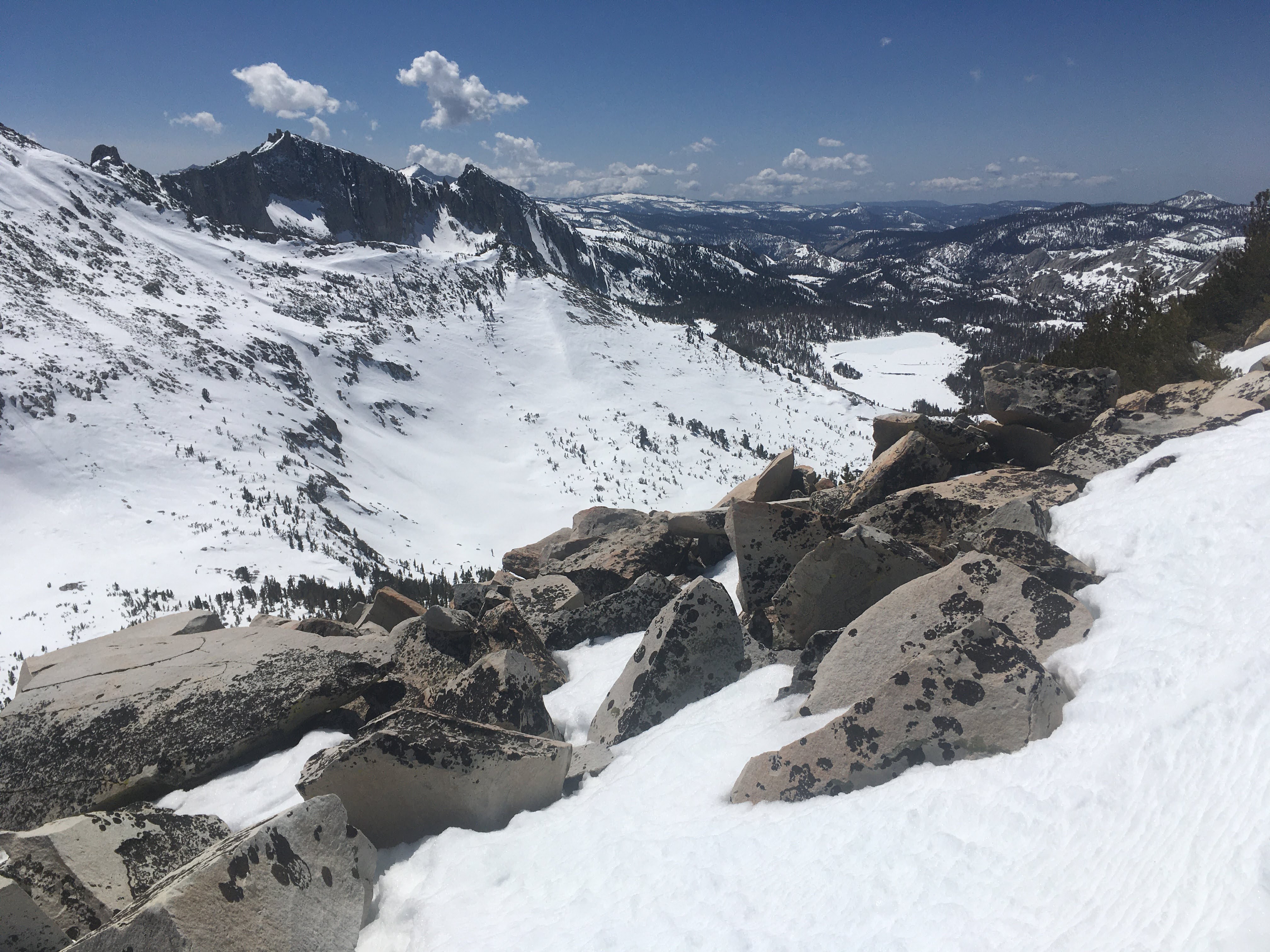Settled Snow Depth: 22 inches
High Temperature: 53 °F (April 1)
Low Temperature: 19 °F (March 31)
March Weather Summary
New Snow: 16 inches (Historical Average: 55.5 inches)
Snow Water Equivalent: 0.97 inches (Historical Average: 3.84 inches)
Average High Temperature: 45° F (Historical Average: 43.6° F)
Average Low Temperature:17.8° F (Historical Average: 13.7° F)
Average Temperature: 31.41° F (Historical Average: 28.7° F)
Ski Conditions and Weather
The March weather summary tells the tale of the third month in a row of much drier and warmer weather for the winter. Equally concerning are the snow survey results for the April 1 surveys which historically indicate the peak of water content in the Sierra Nevada snowpack. The Tuolumne River drainage comes in at 41% of “average” for snow water equivalent. This average is derived from 91 years of snow surveying in this drainage. Although there have certainly been drier single winters during this period, the more alarming fact is the persistence of the drought over the past twenty years. As the drier than average years pile up with only a few wet ones thrown into the mix the cumulative effects of drought become more apparent. In our short eleven winter tenure here, we have seen the impacts of the drought, most notably in the tree mortality of the mid-elevation fir forests. Many dead trees stand with their needles still on them. Even the towering red firs that we once skied through to get to our Snow Flat survey are now just bare 200-foot-tall snags. And the “drought tolerant” junipers on the south slopes of Mt Hoffmann are struggling for survival.
We will add that the skiing this week was really good. The corn snow has developed quite well and the skiing at all locations and aspects between 8,000 feet and 11,000 feet (or so) offers excellent spring skiing. Timing and weather of course are key. On a year like this with such a shallow snowpack the amount of bare ground increases daily, and south aspects are mostly bare already. Finding a good base camp may be preferable to longer tours.
It sure helps to have area familiarity to plan ski outings that will not involve too much walking on bare ground. A wise mountain sage once said, “Skiing is more fun when the skis are on your feet and not on your back.” The forecast calls for temperatures in the mid-60’s by the end of the week here at 8,600 feet so the snowmelt will continue to accelerate. This may be your last chance!
Skis or snowshoes are still strongly recommended for visiting the Yosemite high country.
Skate ski conditions along the Tioga Road and in the meadows and drainages are very good.
The east side of Tioga Pass is bare pavement from the closed gate to Tioga Pass. A bike is a good tool to get to snowline. Bicycles are not permitted on the Tioga Road in Yosemite National Park presently. Please be aware and respectful that there are road crews working on the east side of Tioga Pass.
Avalanche and Snowpack Conditions
Please refer to the Eastern Sierra Avalanche Center (ESAC) for the avalanche advisory for this part of the Sierra Nevada.
The avalanche hazard is mostly low in the Tuolumne Meadows area. There is still potential for wet slides on all aspects, however, especially if the snow surface does not freeze overnight. Wilderness travelers should be wary of deep ski and/or boot penetration and collapsing snow when traveling in terrain steep enough to slide.
Snow Travel Tip
This is the time of year that the Pacific Crest Trail and other ambitious hikers decide to posthole into the mountains without the pleasure of gliding on skis. Many of these folks come from other parts of the country or world where the skies can often be overcast and gray. Little do they realize how intense the UV light can be at high elevations especially when reflected by the snow. After a few days traveling their eyes feel gritty and start to water if they aren’t wearing sunglasses. One year we even encountered a person who had sunburned their eyes so badly that they could barely see. This phenomenon is known as snow blindness or, if you want to sound really cool, keratoconjunctivitis photoelectrica. If you lose or forget your sunglasses you can make a version like those that have been made for thousands of years by those who inhabit more northerly latitudes. But in lieu of caribou antlers or driftwood, you can carve a slit or poke fine holes into carboard, fabric or good ol’ duct tape and fashion your own pair of snow goggles. At a minimum, hopefully you remembered the sunscreen. You may not feel the burn as it is happening to your eyes or skin, but you may pay the price for years to come if you don’t protect yourself from the sun.
Wildlife
The American robin is now singing well before the sun rises and gradually the chorus increases as the sky is illuminated. The dark eyed juncos, mountain chickadees, brown creepers, pine siskins, and red crossbills slowly join in. And, for the crescendo, the Cassin’s finch tries to outdo the noisy northern flicker who really isn’t cut out for the music industry but greets the morning enthusiastically, nonetheless. As we head out the door today, the yellow-rumped warbler sweetly reminds us that ski season is almost over.
Questions
The wilderness is open! Please #RecreateResponsibly by planning and preparing thoroughly for your outdoor activities in the park.
Read through the following two pages before embarking on any day or overnight snow travel within this park:
You may contact us with any additional winter Tuolumne Meadows related questions.
Happy Spring Skiing!


